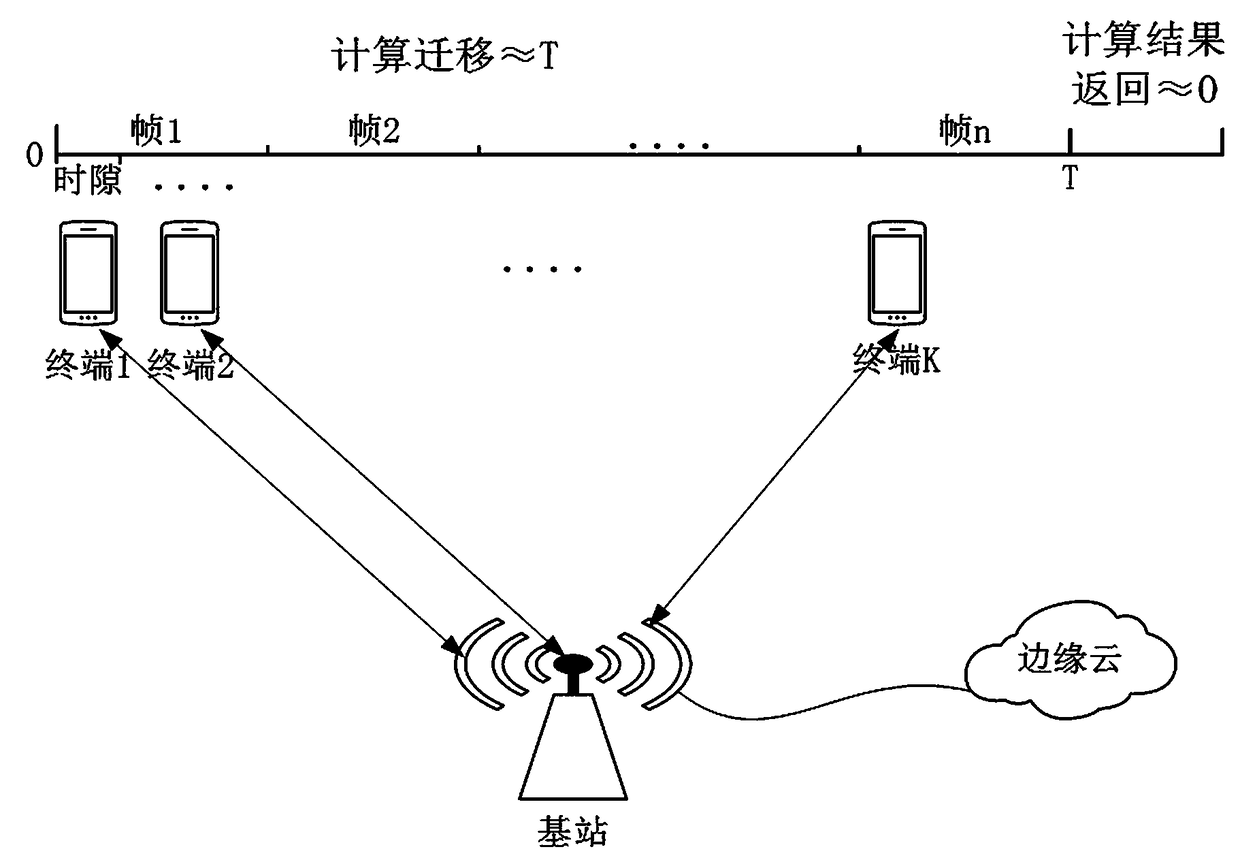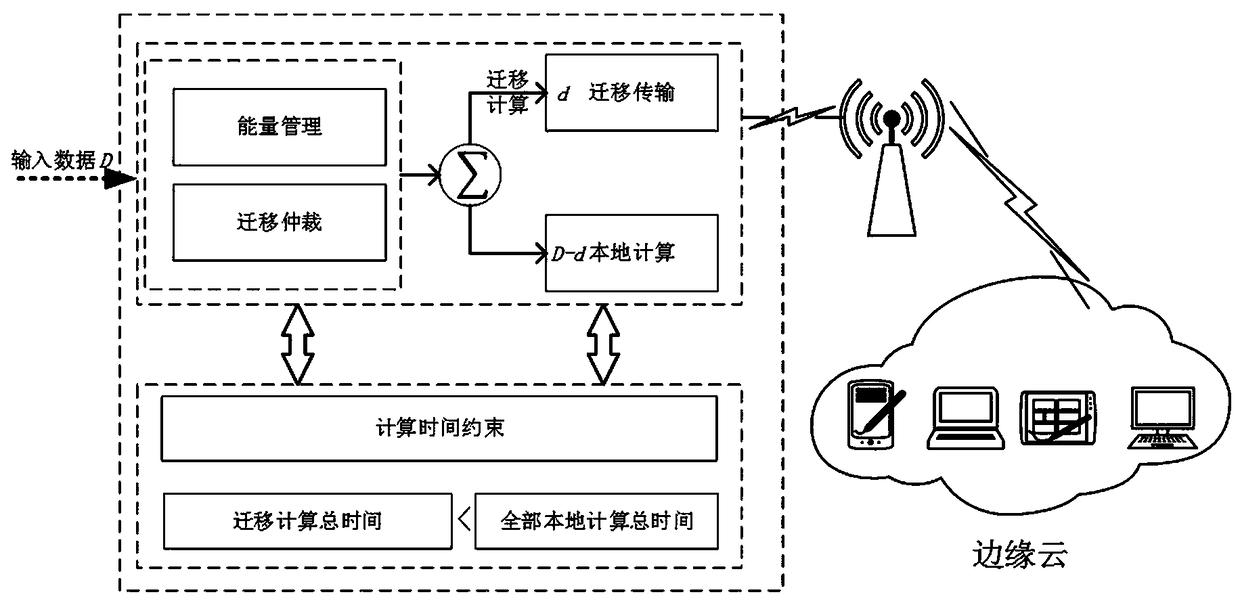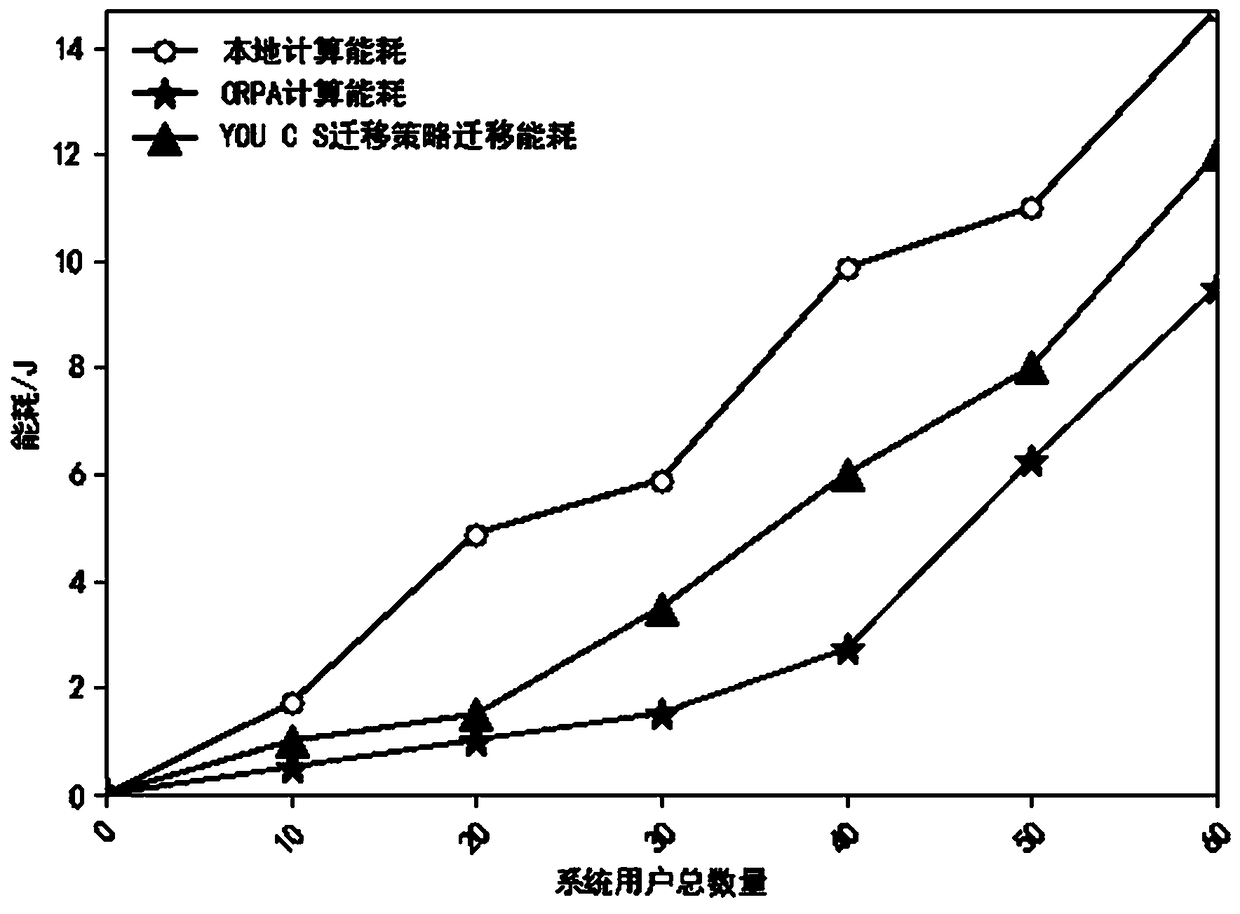Lagrange-based energy consumption optimization method for computing migration terminal
An optimization method and mobile terminal technology, applied in the direction of reducing energy consumption, advanced technology, electrical components, etc., can solve the problems of joint consideration of delay and energy consumption, failure to achieve global optimality, lack of research on multi-user MECO resource division, etc., to achieve The effect of avoiding system overhead
- Summary
- Abstract
- Description
- Claims
- Application Information
AI Technical Summary
Problems solved by technology
Method used
Image
Examples
Embodiment
[0041] Such as figure 1 , figure 2 As shown, the model used in the calculation of the present invention is as follows:
[0042] A method for optimizing energy consumption of computing migration terminals based on Lagrangian of the present invention is a time division multiple access-based MECO system in a cellular network (LTE) environment. The system model consists of K indexes as 1, 2,... , K terminal users and a base station as an edge cloud gateway, divide the migration time T into non-overlapping time periods (frames), and then divide the frame into non-overlapping time slots (channels), each time slot and A user has a one-to-one correspondence. The system distinguishes user signals from different addresses according to time slots, thereby completing the computing migration of multiple-access multi-user single edge cloud. For the computing model, each terminal k has an input data of D k The bit calculation task needs to be completed.
[0043] Let C k Represents the number of...
PUM
 Login to View More
Login to View More Abstract
Description
Claims
Application Information
 Login to View More
Login to View More - R&D
- Intellectual Property
- Life Sciences
- Materials
- Tech Scout
- Unparalleled Data Quality
- Higher Quality Content
- 60% Fewer Hallucinations
Browse by: Latest US Patents, China's latest patents, Technical Efficacy Thesaurus, Application Domain, Technology Topic, Popular Technical Reports.
© 2025 PatSnap. All rights reserved.Legal|Privacy policy|Modern Slavery Act Transparency Statement|Sitemap|About US| Contact US: help@patsnap.com



